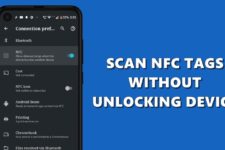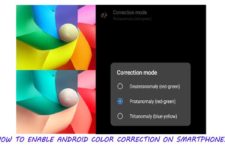
Xposed framework has finally made official for the Android Lollipop just a few days ago, thanks to the deep efforts of rovo89 and whoever was involved in the development and testing of our favorite tweaking framework on Android. The Xposed framework V3.0 is still in the alpha version and you can expect a load of bugs in the development phase but it’s worth taking a little risk.
However, not all the Lollipop devices are lucky enough to run the latest version of Xposed framework due to many reasons. Most of the Samsung devices are stuck at boot logo after installing the Xposed V3.0 and few other devices are still facing many compatibility issues. Not to our surprise, even Nexus 6 owners turned pale trying to get things working on their device but were heartbroken with errors like Xposed wasn’t installed. After a lengthy workaround by the folks at XDA, bmg1001 has posted a simple fix on how to fix these errors and make Xposed V3.0 work on Nexus 6.
Also Read
List of working Xposed modules on Lollipop
In this guide, we are listing various workarounds which are posted on XDA. Try any one of the below methods to fix the errors on Nexus 6. Before you barge into the guide, install the Xposed framework on your Nexus 6 (if you haven’t already) from the below link:
How to Install Xposed Framework on Lollipop devices
Method 1
This method involves setting the SELinux to permissive mode and performing a soft reboot to check whether the issues are fixed.
- Make sure the SELinux is set to permissive on your device. If not, set it to permissive mode using the below app (root required):
[googleplay url=”https://play.google.com/store/apps/details?id=com.mrbimc.selinux”] - Open the Xposed framework app and enable all the modules you want.
- Perform a soft reboot from the Xposed app itself and things should work after the device boots up.
- If this didn’t fix your issue, try converting Xposed to system app which might fix the issue.
Method 2
In this method, you will install init.d scripts on your device to make things work. However, kindly note that not all kernels/ROMs support init.d scripts. Thanks to skaforey for sharing this script.
- Download the init.d scripts and extract the file to the root of your device’s storage.
- Install the Terminal Emulator app and open it.
[googleplay url=”https://play.google.com/store/apps/details?id=jackpal.androidterm&hl=en”] - Open the terminal emulator and type the following commands one by one:
su cd /sdcard/ sh initd.shGrant SuperSU permissions when prompted.
- Reboot the device.
Method 3
This method is same as the method 2 but you can just flash the init.d scripts using a custom recovery. If you’ve not installed a custom recovery on your Nexus 6, follow the below link:
Install TWRP recovery on Nexus 6
- Download any one of the flashable init.d script zip → Zip 1 | Zip 2
- Boot into the recovery mode and flash the zip file from the Install menu.
- Reboot the device once everything completes.
That’s it, either one of the methods should work on your Nexus 6. If you’re still facing any issue, kindly let us know in the comments section below.




Join The Discussion: